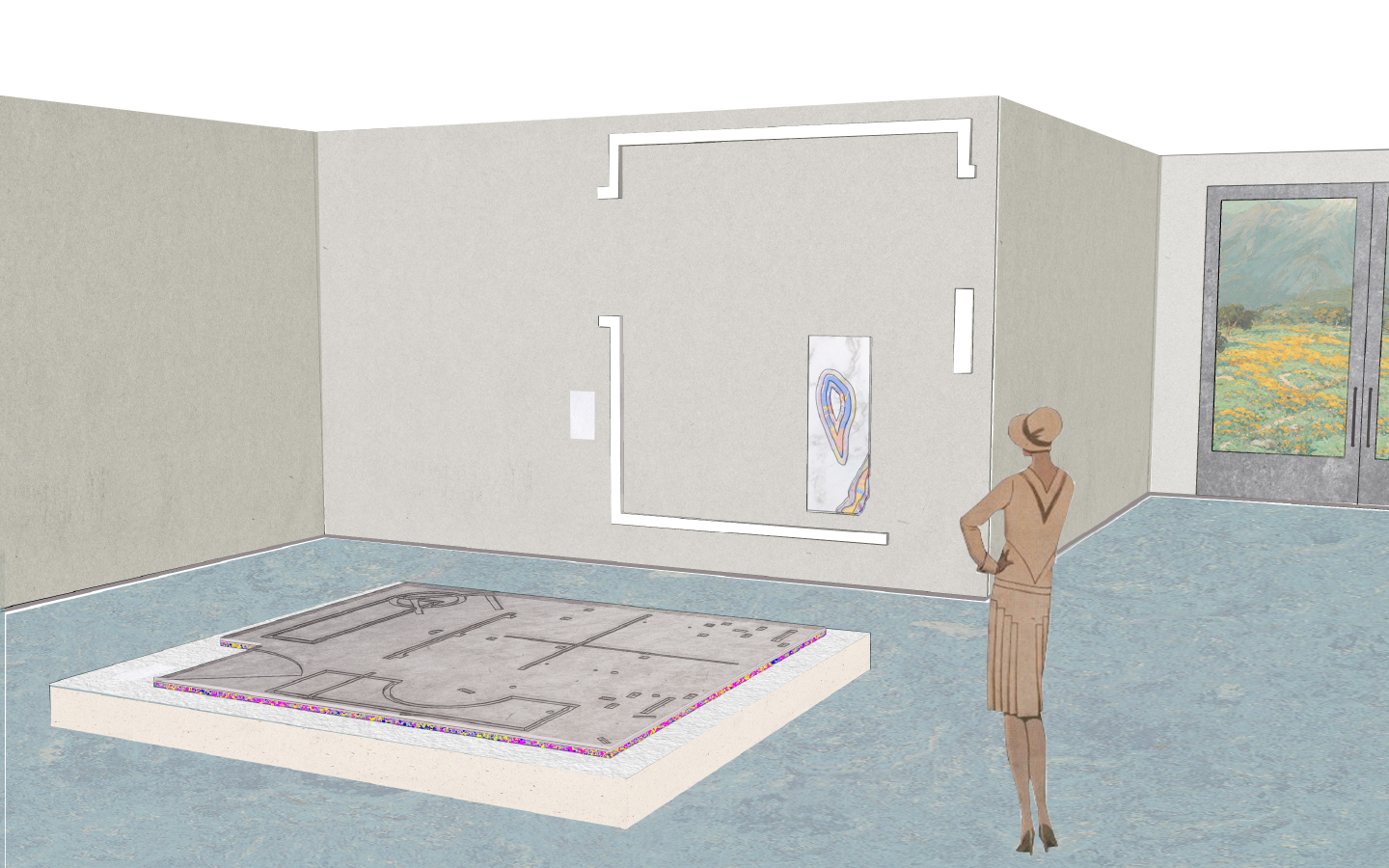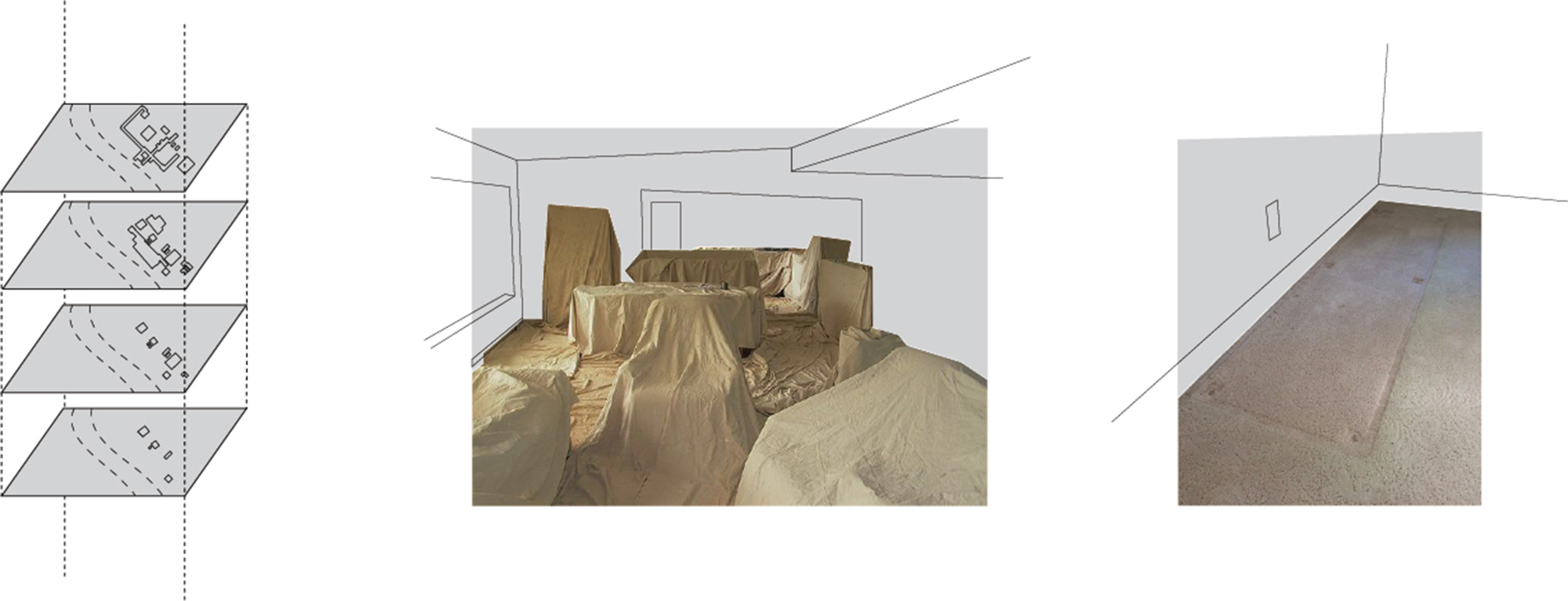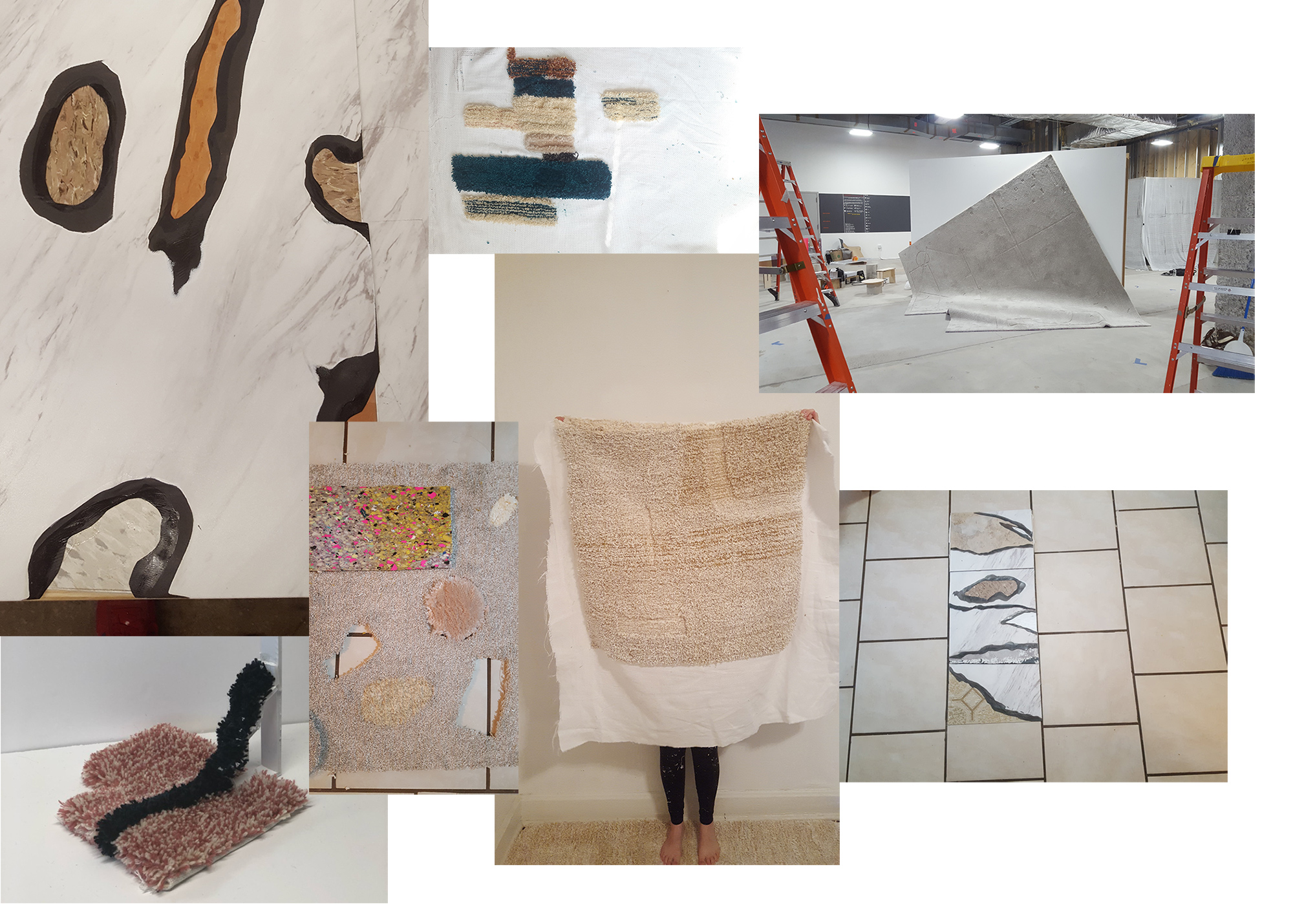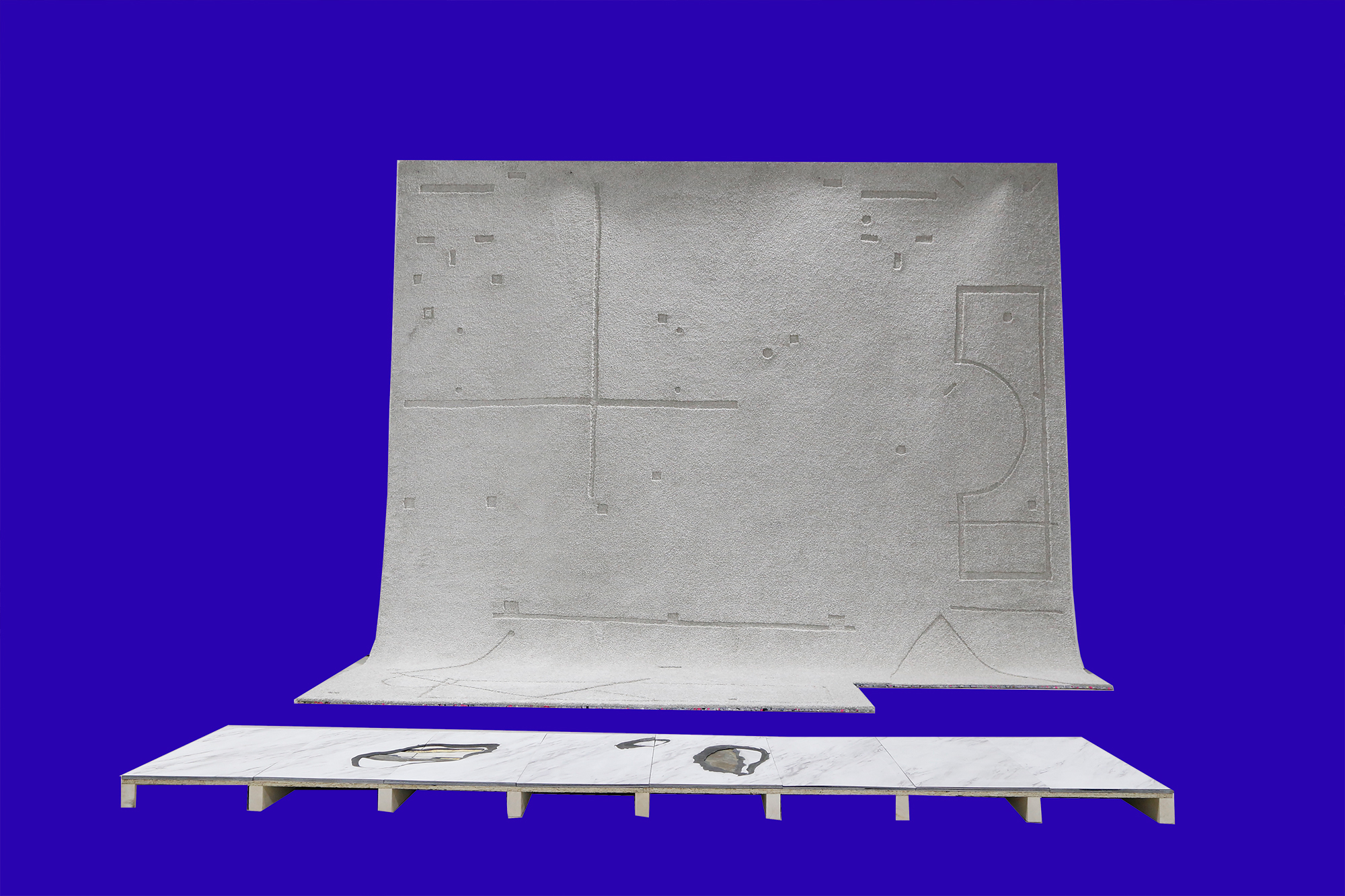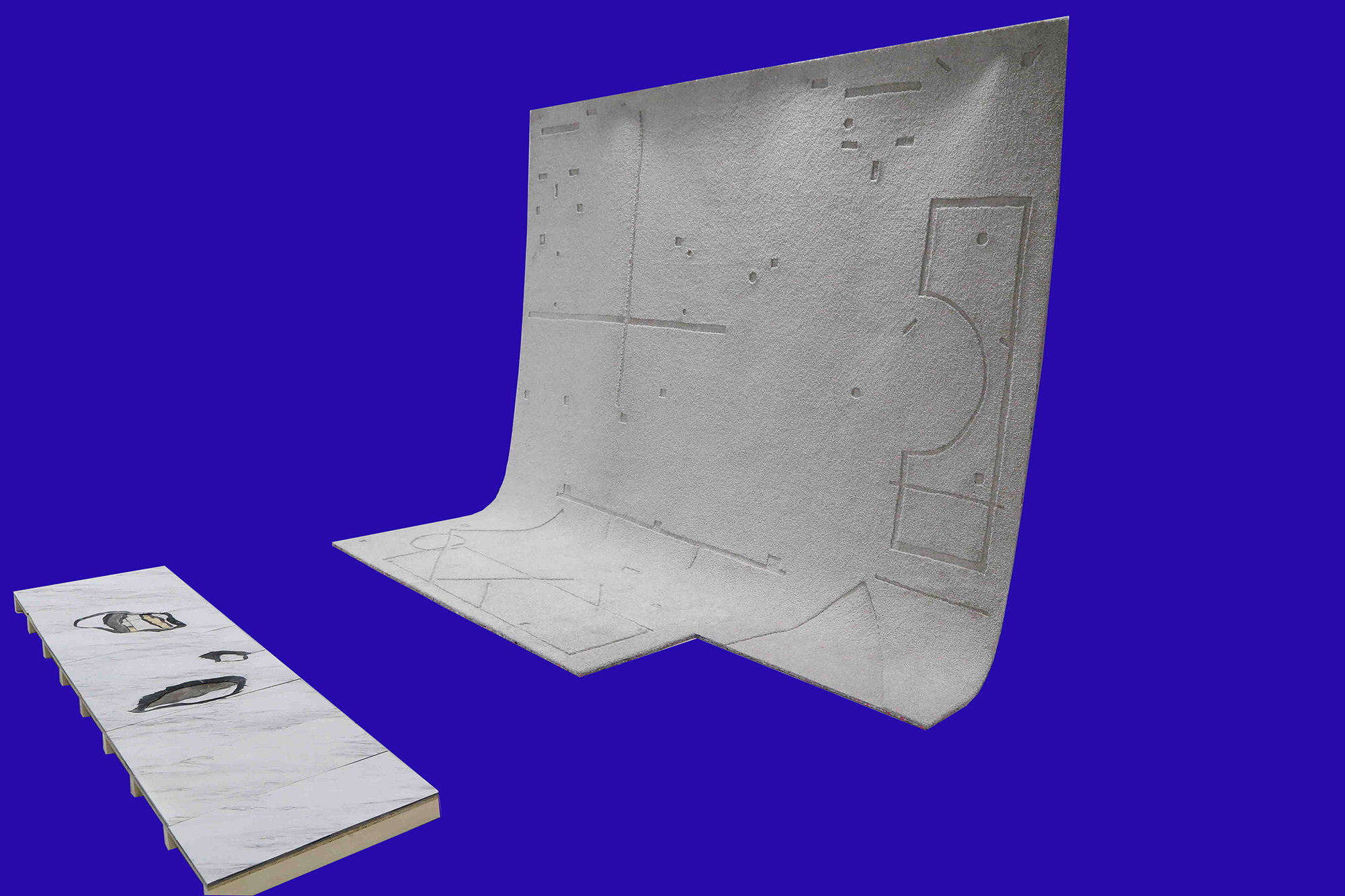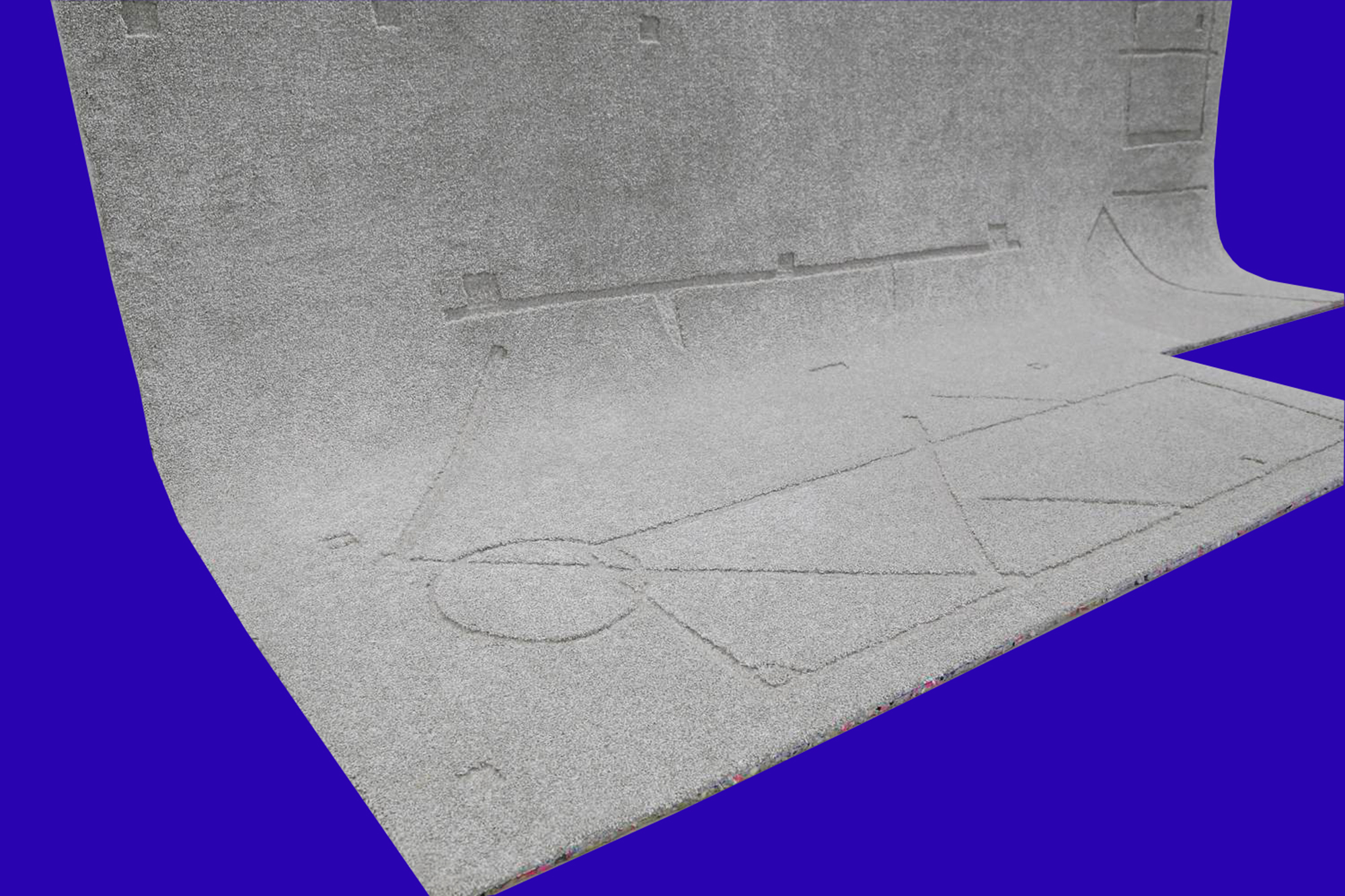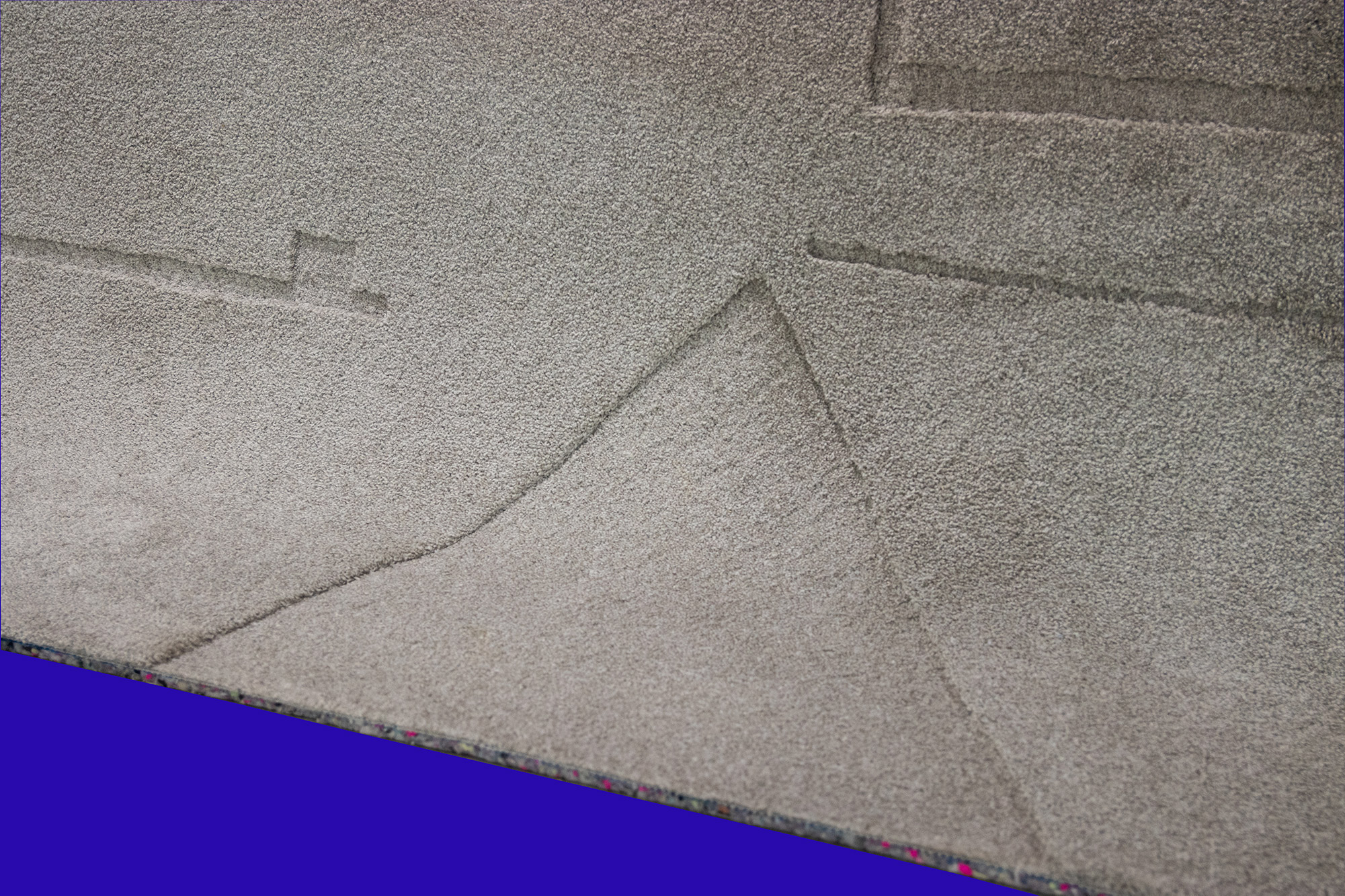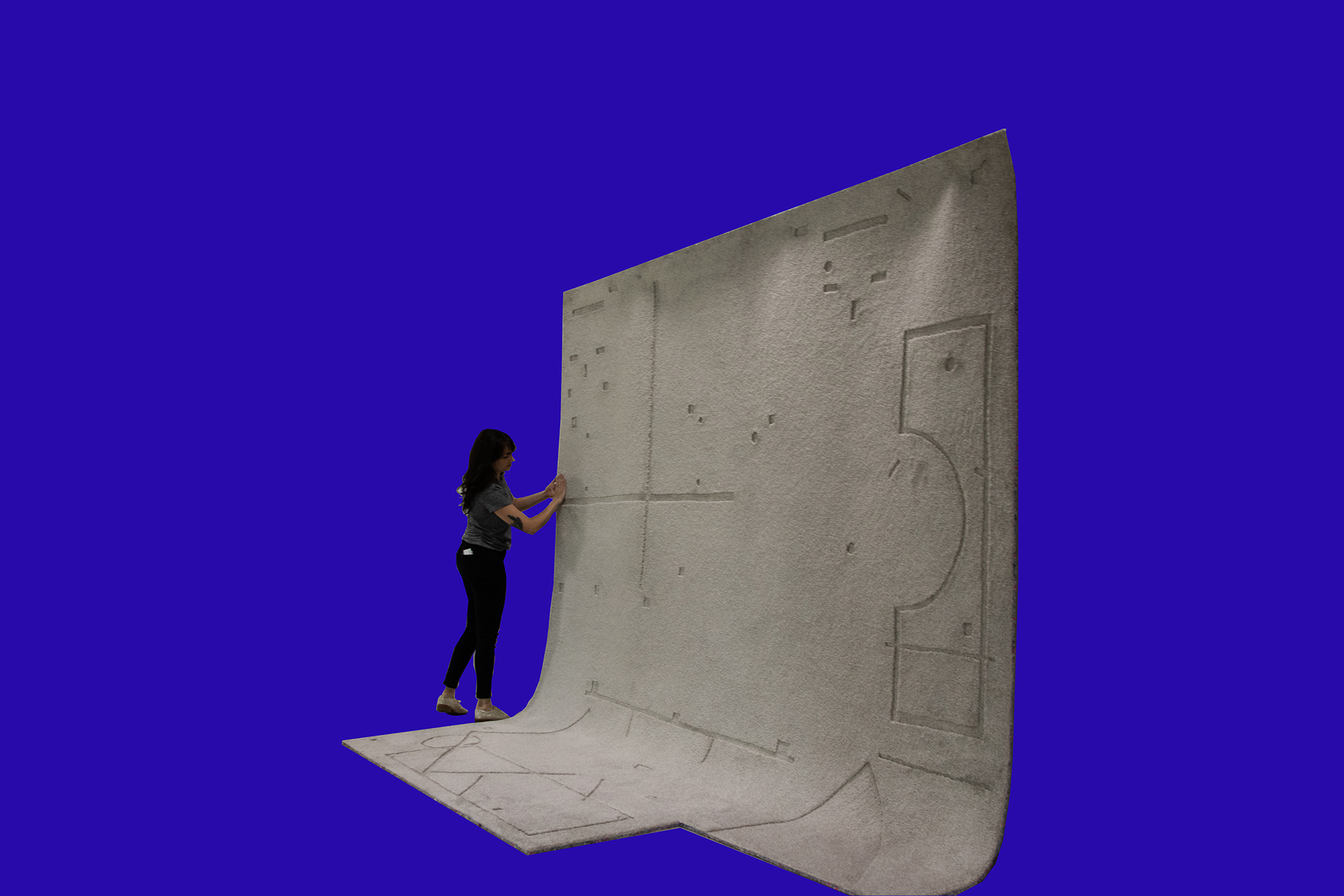As time advances spaces reconfigure themselves leaving subtle but legible remnants. In this work the home is treated as an archaeological site excavating fragments of the kitchen and bedroom. The placement and movement of its occupants both animate and inanimate are mapped by floor coverings which retain permanent traces and accidental glimpses of the home’s historical residue.
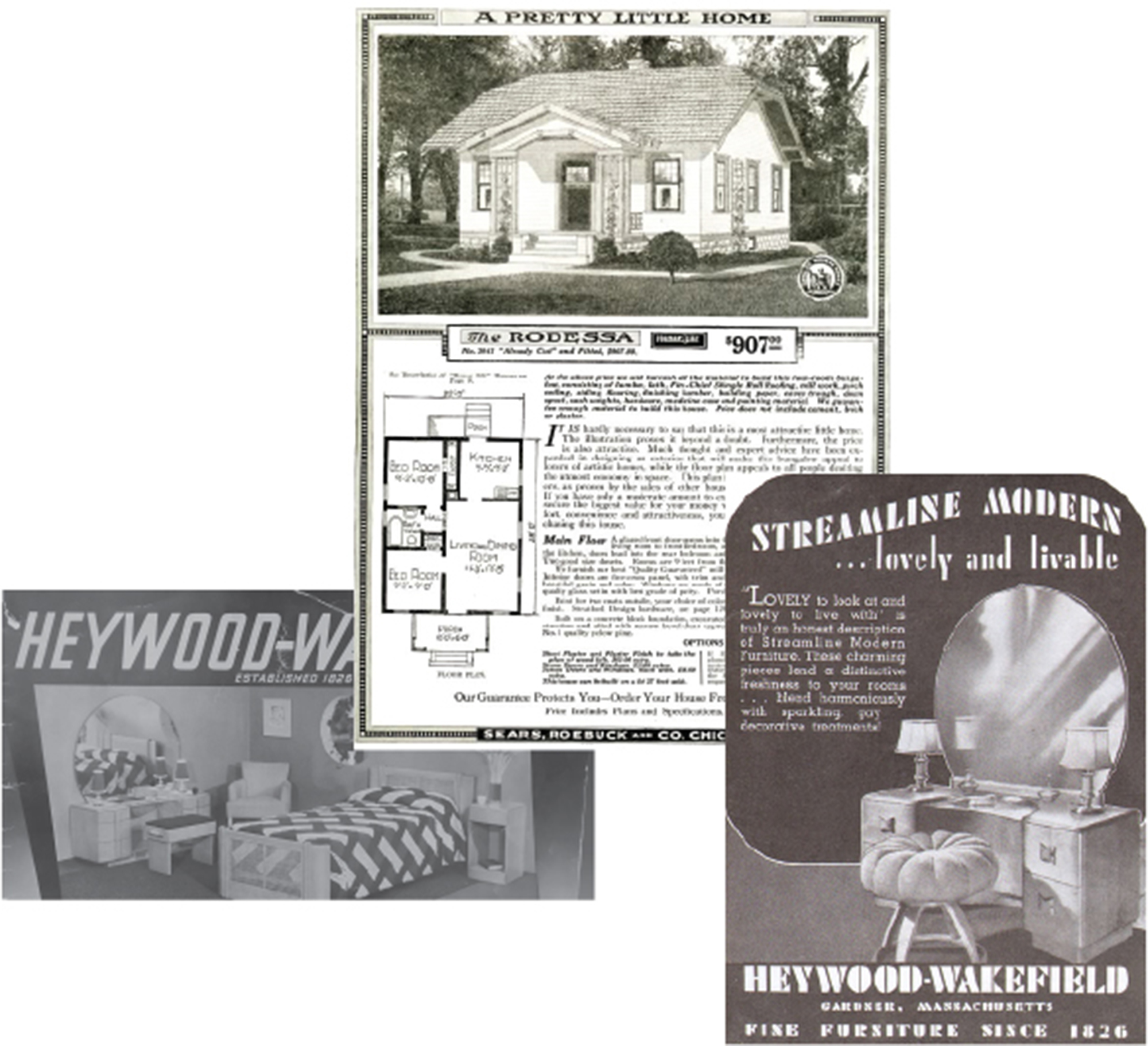
Objects play a part of a complex and larger whole, layering over time. The palimpsest represents this ongoing process of making and remaking through time.* The moments of erasure, superimposition, and reappearance which occur in the object have caused it to be transformed from an object to the concept of a metaphor. This metaphor has been adopted by areas as diverse as architecture, archaeology, and forensics. In architecture it refers to sites which have been modified and built upon over time, retaining relationships to multiple temporal realities in a single place. Kevin Lynch describes the process in which, “the visible accumulation of overlapping traces from successive periods, each trace modifying and being modified by the new additions, to produce something like a collage of time. ” In archaeology and forensics, it is used as a conceptual tool for describing the unfolding of events within a specific site over time.
*The materiality of vellum pages used in manuscript production allowed for the phenomenon known as the palimpsest to occur. Due to economic constraints and labor intensive methods required to produce vellum, scribes would scrape pages clean of their original text and reuse them. As the ink broke down over time, traces of the original text slowly became visible and a layering of time and subject matter superimposed one another in the physical space of the page, “retaining permanent traces and accidental glimpses of previous layers”.
Blind Impression explores the palimpsest as a conceptual tool within design. As time advances, the space reconfigures itself, leaving subtle but legible remnants. In this work the home is treated as an archaeological site, excavating fragments of the kitchen and bedroom. The placement and movements of its occupants, both animate and inanimate, are mapped by floor coverings which retain traces of several decades of the home’s historical residue.
Artifact 1 references ubiquitous beige carpets found in modern homes. Blind impressions, caused by the weight of furniture pressing down onto the carpet fibers, are often left behind when occupants move on. They offer a glimpse into the configuration of the space in its past life. In the design of Artifact 1 these impressions are used as a design element, tracing the living plan of multiple episodes of occupancy through the decades since the home’s construction. The layout and dimensions of the rooms are based off of the floorplan of the Rodessa model home by Sears. The footprints left by the furniture reference popular bedroom sets that would have been available to the original homeowners. Superimposed onto the same surface, the subsequent set of impressions are inscribed by the home’s new occupants, leaving several distinct narratives to coexist in the traces of the carpet.
In the kitchen linoleum flooring is installed, damaged by wear and tear, and ultimately resurfaced with a new layer of material. While the evidence of ritual movements are still retained by the layers below. Artifact 2 references this layering of material built up over time. A remnant of flooring is excavated from the Rodessa House Site which retains markings that indicate patterns of movement. In the design of the fragment, traces that have been covered up but are at strategic moments made to reappear. The process of production included building up layers of linoleum material followed by excavation and sanding to reference the wear that would have occurred naturally according the room’s imagined past. There are areas which wear down in the same location in all layers, indicating an overlap in the movement of humans and objects through time.
